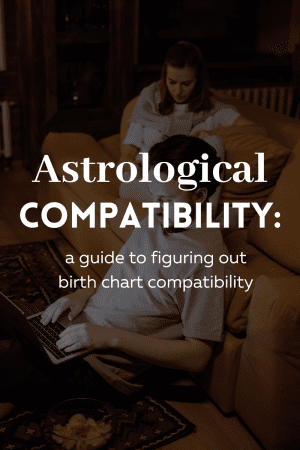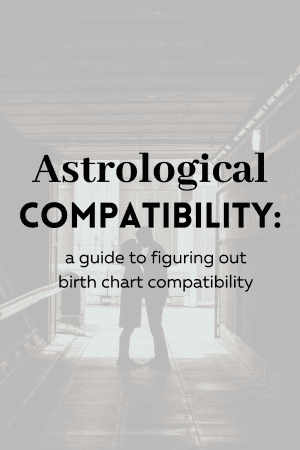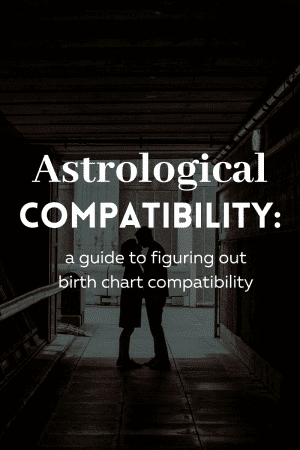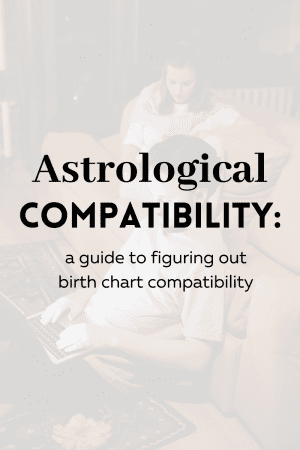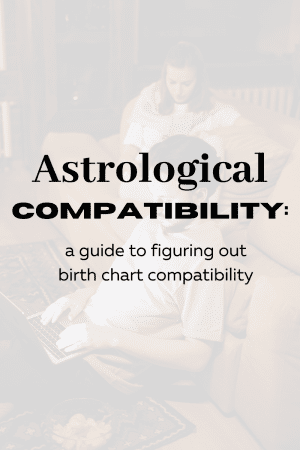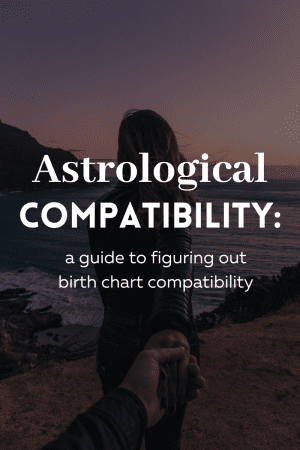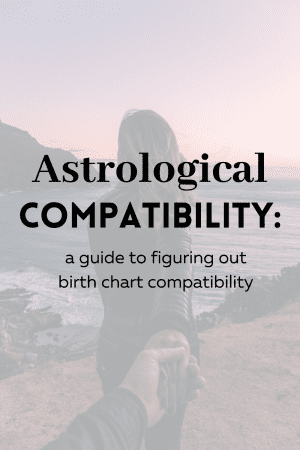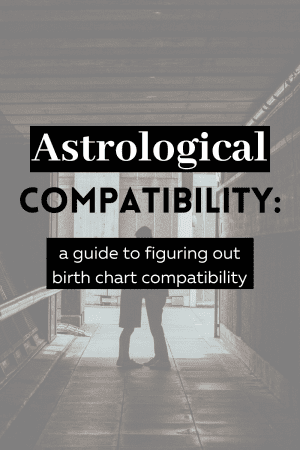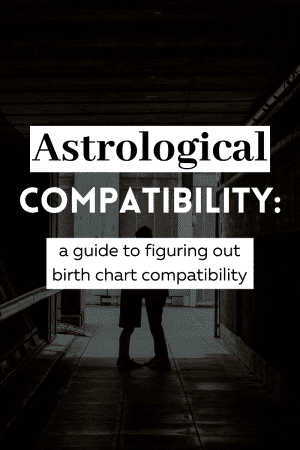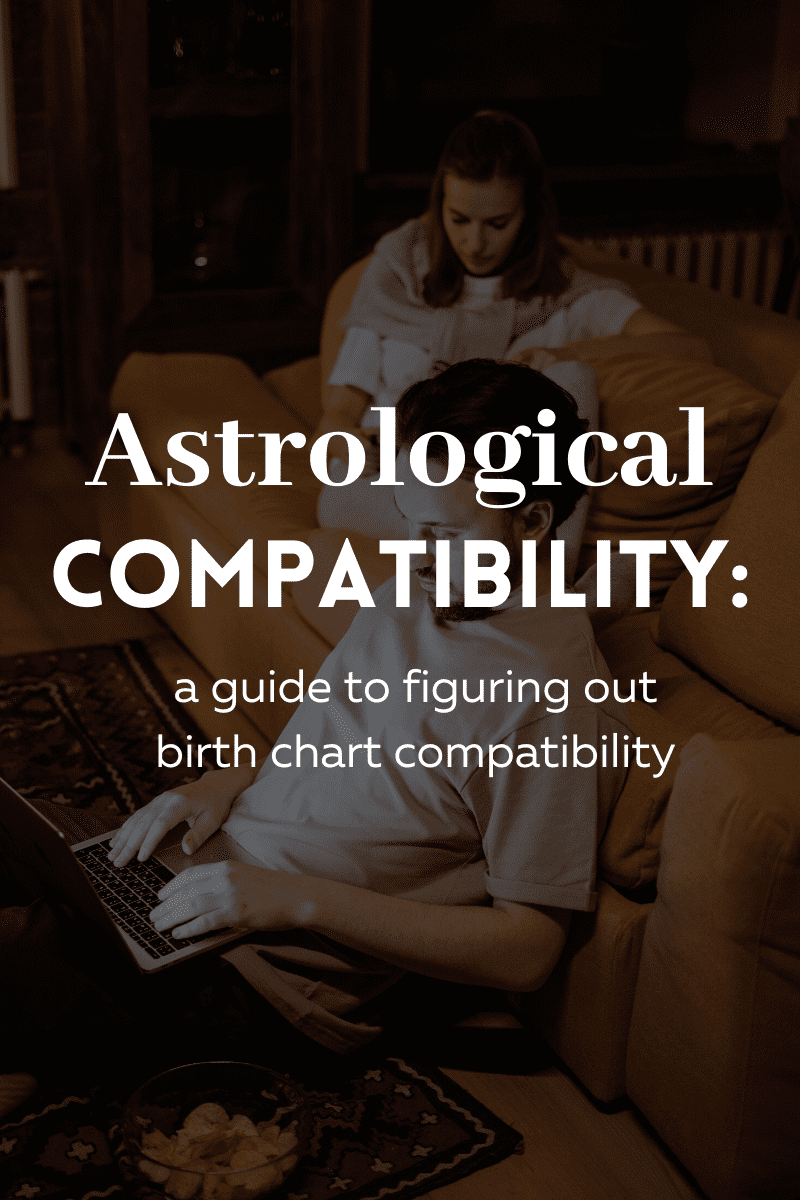90% of the time, when I’m asked a question about astrology, it has to do with love and relationships. Everyone wants to know if they’re compatible with their partner and what the stars say their destiny is.
I have to admit, even I find myself going back to relationship astrology over and over. It’s a pretty complicated area of astrology, and there’s always more that the charts can tell me about my relationship.
However, I remember how daunting it was to break into the world of relationship astrology. There are so many signs and placements that it can seem impossible.
I’m hoping that this post will provide some clarity and break it down for those of you who need a cheat sheet.
Firstly, what can you learn from relationship astrology?
There’s honestly so much information that the chart can tell you about who you are, what kind of a partner you attract, what sort of relationship or marriage you need, what flaws you have in a relationship, and more.
The most common question is always: “Are we meant to be?” My answer is that while the chart can definitely show if your relationship has favorable qualities or unfavorable ones, it won’t give you a definite answer.
What it will do is give you a clear picture of your strengths, flaws, communication abilities, and past lives together.
What planets should you look at to learn about these qualities?
The most important placements in an astrological compatibility reading are:
- Venus
- Mars
- Juno
- Lilith
- The Descendant
Venus and Mars have to do with the first meeting and honeymoon phase, as well as how you show aggression, anger, and drive (Mars).
When it comes to a longterm relationship and commitment, Juno and the Descendant are more important. I recommend looking at Juno aspects if you’re not seeing a lot of info from the Juno astrology signs alone. Venus and Mars will still rule as far as attraction.
Lilith comes into play when you look at desire and sexual astrology, and is also important in terms of attraction. Many astrologers feel that Lilith shouldn’t be considered, but after realizing that it has such a profound effect on my life and the lives of my family and friends, I always include it in astrological compatibility reports.
Related: Pallas Astrology – How You Solve Problems
What is a synastry chart?
When looking at astrological compatibility, I use synastry charts. A synastry chart is an overlay of both charts, such as this:
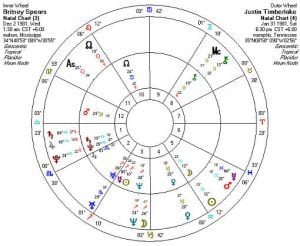
This enables you to read both charts together and see similarities and difficulties in the relationship. It doesn’t usually matter which person is on the inside wheel, although it’s best to read the relationship from the perspective of that person (although it doesn’t really change the layout).
You can get a synastry chart drawn up for free online multiple sites; this is my favorite.
I use the iPhemeris software (from the Mac store) to create synastry charts because I’m able to save them for later, but it is a bit of an investment.
Related: Black Moon Lilith Aspects In Synastry
What should you analyze once you have a synastry chart drawn up?
I look at conjunctions in the synastry first, which is when two planets are in the same sign within 4 or 5 degrees of each other. For example, if your Venus is in Aries at 15 degrees, and your partner’s Saturn is in Aries at 12 degrees, that is a conjunction.
The energies of the conjunction will work together and set the tone for the relationship, flavored by the sign. I find conjunctions to be the most important when it comes to synastry charts, but once I’ve found all the main conjunctions (including asteroids), I look to squares and trines next.
Interested in learning more about relationship astrology?
Check out our 40+ page relationship astrology ebook!
